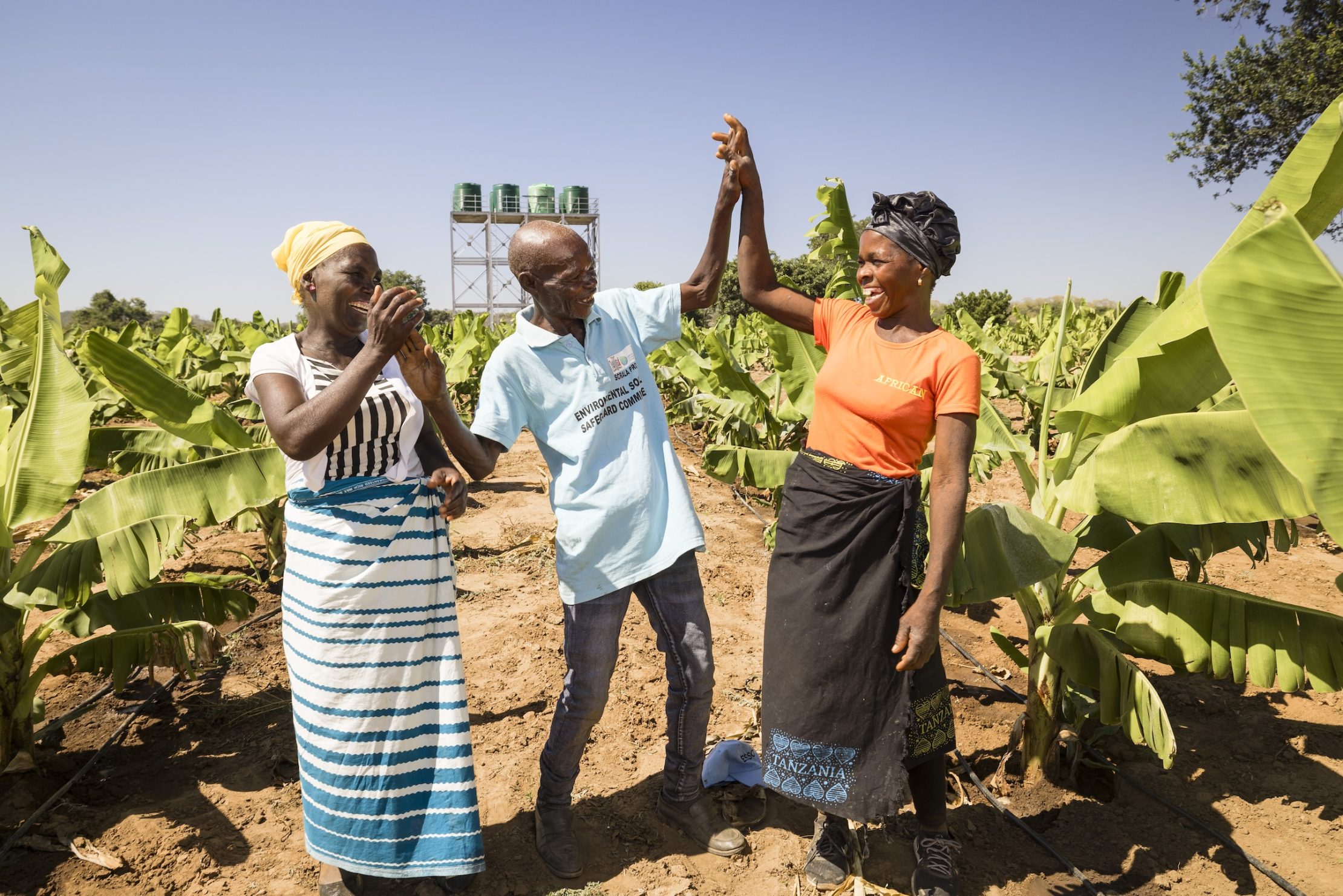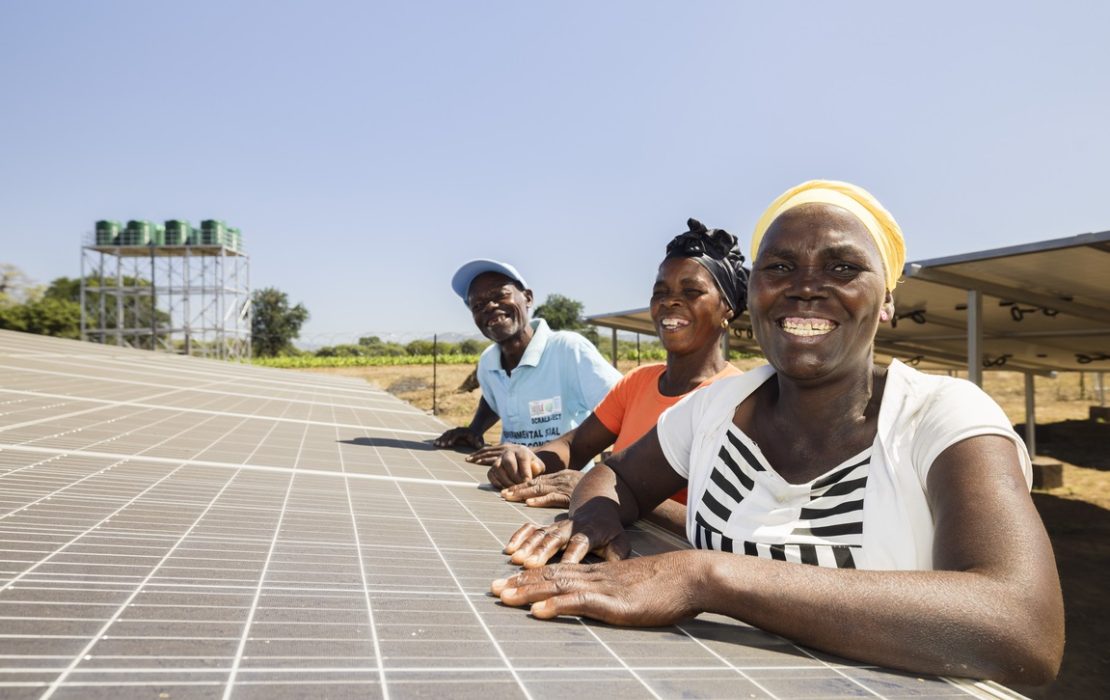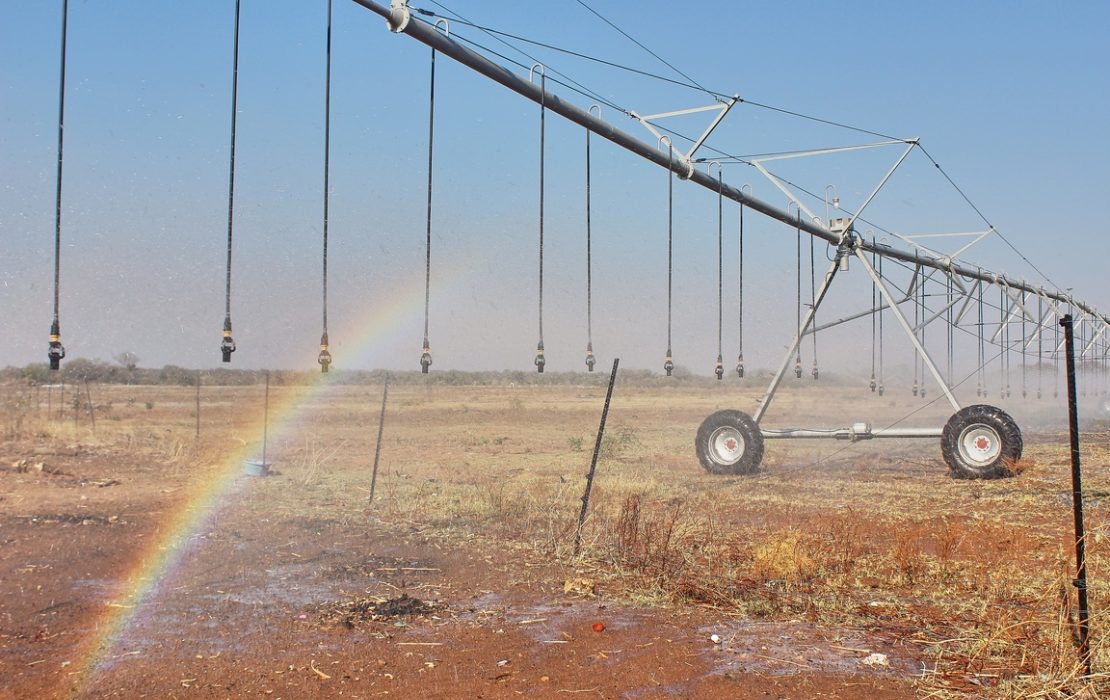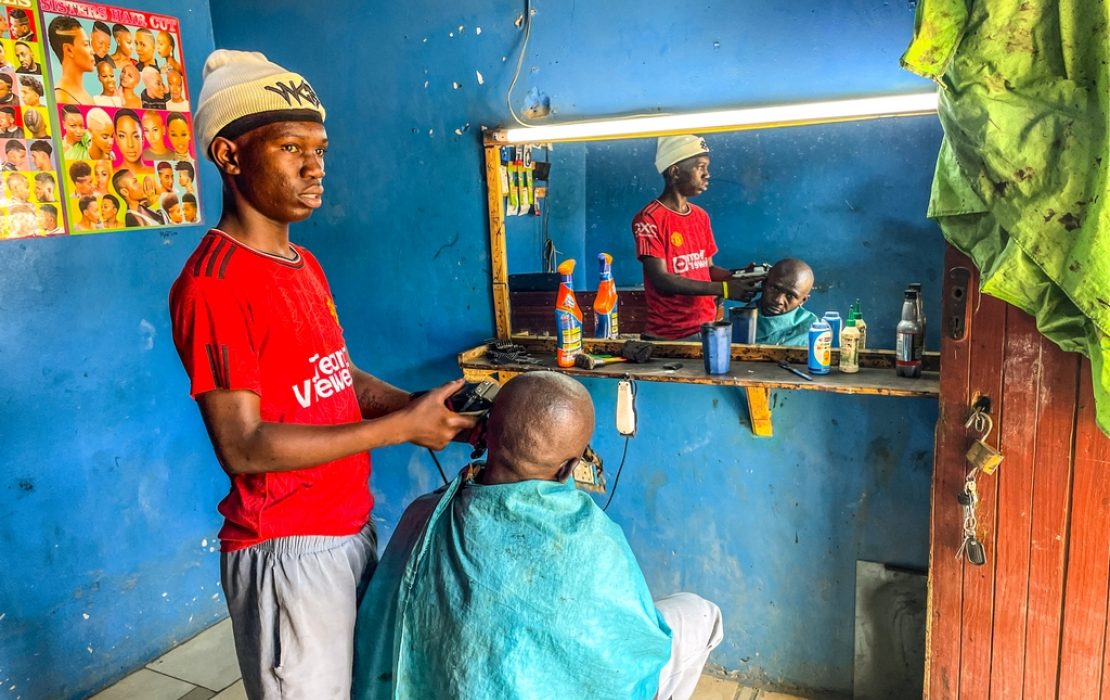
Women’s access to sustainable energy is essential to unlock the full potential of renewable solutions. Photo: UNDP Zambia
The Victoria Falls, located on the mighty Zambezi River at the border between Zambia and Zimbabwe, is known as the “smoke that thunders” among locals, a reference to the waterfall’s billowing clouds of mist. But for much of 2024, the thunder was quiet.
During this time, Zambia was facing its worst drought in over forty years, exacerbated by climate change and intensified by El Niño. This crisis affected 9.8 million people and caused significant displacement. Beyond being an economic and humanitarian emergency, the drought also triggered a major energy crisis. Water levels in the country’s key rivers and reservoirs, including Kariba Dam, Kafue Gorge and Itezhi-Tezhi, dropped drastically low, severely reducing hydropower generation. With more than 80 percent of the country’s electricity coming from hydropower – a source long considered reliable and stable – the consequences have been far-reaching.
Millions of people faced daily power cuts, sometimes lasting up to 21 hours or more, that severely disrupted essential services like healthcare and education. Patients in hospitals were at risk, as life-saving medical equipment was made unreliable by the unstable power supply. Farmers struggled to irrigate their crops, worsening food insecurity. Small businesses – the backbone of the economy – were also severely impacted and forced to close early or operate at a loss, making recovery even more difficult.
Diversifying renewable energy sources is key to energy security and resilience
Zambia’s recent energy challenges are not unique in Africa. The rising frequency and intensity of droughts have exposed hydropower-dependent nations to increased energy vulnerability. Due to fluctuating water levels at the Kariba Dam, Zimbabwe has recently been affected by power cuts as well as load shedding – controlled power outages designed to prevent overloading the grid. Further north, Tanzania is experiencing similar challenges. In the face of growing climate disruptions, the need for diversified and resilient energy systems in Africa has never been clearer.
Kenya provides a compelling case study of how strategic energy sector reforms can enhance resilience. In the 1990s, the nation faced a crippling drought that severely impacted its hydropower generation capacity, prompting a deliberate shift toward a diversified energy mix. The transition to geothermal, wind and solar power has strengthened Kenya’s energy security and reduced its exposure to climate-induced disruptions, offering a valuable model for other African nations to follow.

Solar energy helps rural communities increase their income and face climate change impacts. Photo: UNDP Zambia

Irrigation is an example of productive uses of energy that supports climate-resilient agriculture. Photo: UNDP Zambia
For Zambia to achieve a resilient energy future, it needs to follow a similar path and diversify its renewable energy mix. Here are five concrete steps the country is taking to turn this vision into reality:
- Establishing forward-looking policies and strategies that lay the foundation for a more resilient energy future. Zambia's National Green Growth Strategy underscores the need to diversify the energy mix by scaling up renewables like solar, wind and geothermal – essential steps for strengthening climate resilience, enhancing energy security and unlocking new pathways for socio-economic development. Furthermore, with support from UNDP and key partners, Zambia is now preparing its third-generation Nationally Determined Contribution (NDC) under the Paris Agreement, which includes energy as a priority sector. These policies and plans align with the country’s overall objective to attain low-carbon, climate-resilient and inclusive economic growth.
- Linking policy to action to close the energy access gap. As of 2023, about half of the population in Zambia lives without electricity and over 80 percent rely on traditional fuels for cooking. Since energy access is a critical enabler for the country’s socio-economic development, different national initiatives are working to reduce this gap. The Presidential 1000 Mini-Grid Initiative is providing energy access to underserved communities, driving growth in sectors like agriculture and rural development. In parallel, the Zambia Energy Compact, supported as part of the Africa-wide Mission 300 effort, envisions 100 percent electricity access across the country through energy diversification, with a focus on increasing renewable energy solutions and clean cooking technologies. More recently, Zambia’s Ministry of Energy has reduced the solar project application approval time from over six months to 48 hours to attract private investment and support its goal of adding 1000 megawatts of solar energy to the national grid by the end of 2025.
- Promoting productive uses of renewable energy. One of Zambia’s key strategies for scaling up distributed renewable energy systems, including solar minigrids, is making sure that energy goes beyond just lighting homes. The focus is on promoting productive uses of renewable energy: powering activities that generate income and improve livelihoods. This includes everything from irrigating crops, milling grains, refrigerating food, and powering tools and equipment used by small businesses. Designing minigrids to support productive uses can help to transform daily life, building thriving businesses and services right where people live, and keeping essential services within reach. UNDP is supporting this effort through the Africa Minigrids Program and the Productive Uses of Electricity project, which provides grants to small- and medium-sized enterprises, including women-led organizations. One grantee, Finecop, has introduced solar-powered farming equipment, including groundnut shellers, oil pressers and water pumps, at a minigrid site in Zambia’s Eastern Province. These local innovations are helping farmers cut costs, boost yields and withstand climate shocks.

Solar minigrids designed with adequate load capacity provide reliable power to support and grow small businesses. Photo: UNDP Zambia

The productive uses of energy approach aims to ensure electricity uses extend beyond lighting and power livelihood activities. Photo: UNDP Zambia
- Reducing dependence on climate-vulnerable energy systems, especially for critical services. As the least-cost option for providing reliable electricity to sparsely populated and remote areas, solar minigrids present a transformative opportunity to reduce dependence on climate-vulnerable systems. They can power local infrastructure while weathering future uncertainties and alleviating energy poverty. For example, we are seeing how diversified energy sources can help mitigate the impact of power shortages on Zambia’s healthcare sector. The Solar for Health project aims to support over 400 health facilities across 10 provinces to use solar-powered systems, ensuring access to reliable electricity for storing and operating life-saving medical equipment – especially in rural and peri-urban areas.
- Making the energy transition work for women and underserved groups. Women face greater challenges than men in accessing electricity for business purposes because of restrictive cultural norms, lack of financing to acquire productive equipment such as clean cookstoves, and limited awareness of available opportunities. Overcoming these barriers is essential – not only to advance gender equality, but also to unlock the full economic potential of diversified renewable energy solutions. UNDP, in partnership with the Ministry of Energy, is designing a productive uses of energy roadmap to guide energy access policy and financing, with a strong emphasis on gender equality and social inclusion. The roadmap seeks to boost women’s representation in energy decision-making and introduce financial incentives to encourage gender-responsive investments.
In light of increasing climate change impacts, it is clear that Zambia and other African countries must adapt their energy systems to address both the increasing demand for electricity and the urgent need for climate resilience. As climate-related disruptions become more prevalent, nations across the continent must build energy solutions that are robust, reliable and drive sustainable energy access for all. By prioritizing climate-resilient energy solutions, Zambia shows it is not only securing energy access for its growing population but also fostering economic stability and long-term sustainability in an unpredictable future.
*
UNDP is supporting Zambia prepare its revised Nationally Determined Contributions (NDC) under the Climate Promise 2025 initiative.
The support to design a productive uses of energy roadmap was carried out under UNDP’s Climate Promise by the Pledge to Impact Programme. Delivered in collaboration with a wide variety of partners, the initiative has supported over 120 countries to enhance and implement Nationally Determined Contributions (NDCs) under the Paris Agreement. Pledge to Impact is generously supported by the governments of Germany, Japan, United Kingdom, Sweden, Belgium, Spain, Iceland, the Netherlands, Portugal and other UNDP core contributors. This programme underpins UNDP’s contribution to the NDC Partnership.
Zambia is one of the 21 African countries included in UNDP’s Africa Minigrids Program (AMP), which boosts private investment in solar minigrids by implementing cost-reduction strategies and promoting innovative business models. The AMP Programme is funded by the Global Environment Facility (GEF) and implemented in partnership with RMI and the Africa Development Bank.
The Solar for Health project is implemented through a partnership between UNDP, the Global Fund and the Ministry of Health of Zambia, to ensure quality healthcare delivery.